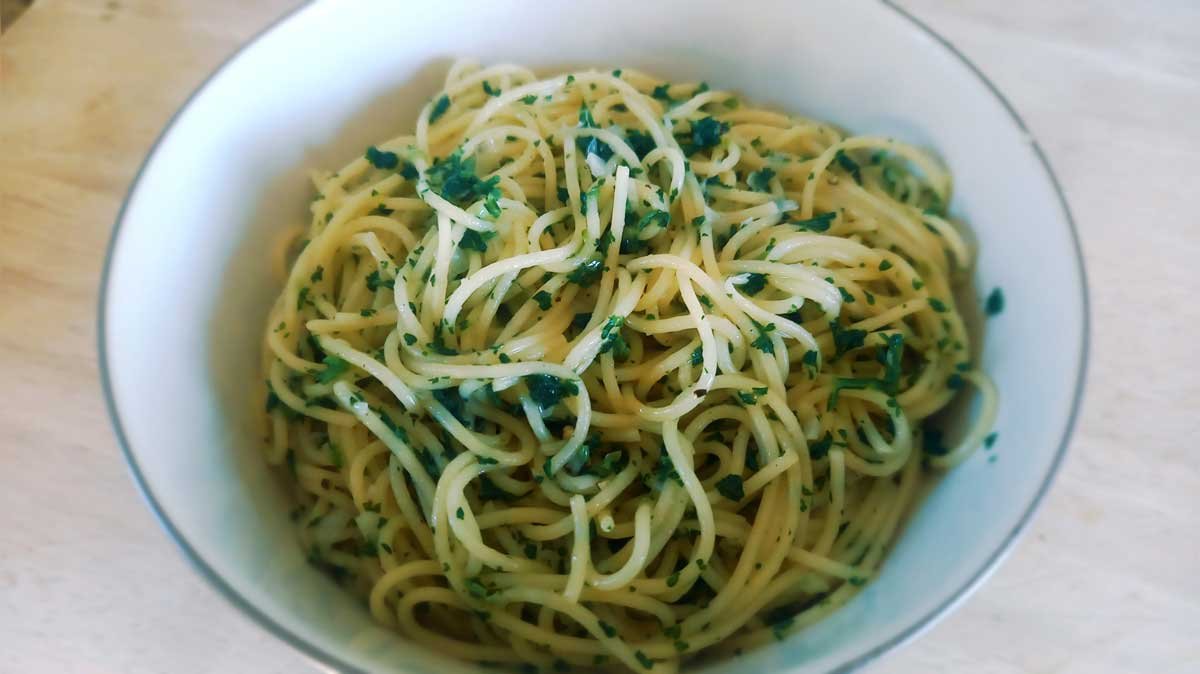Well, spring is really here now. Daylight saving has begun – possibly opening up an extra hour in the evenings to get out and do something in your garden. Though personally I am still adjusting.
October is when things start to kick off in the garden for most of the country. It’s safest to wait until after Labour Weekend to put things into the garden; but it’s full-steam ahead for anything you might be growing indoors or undercover for transplant.
Top line jobs for this month include:
- Sowing summer crops, including the cucurbit family and corn.
- Pricking out previously-sown seedlings like tomatoes and peppers.
- Feeding crops like garlic and citrus.
- Planting early-crop potatoes.
- Mulching gardens to lock in moisture heading into the drier seasons.
Zones
Some districts can get away with things others can’t at different times of the year.
Living in the Far North, I have a very long growing season and can still grow some things my friends further south don’t have time for.
So where necessary, I’ll be referring to the zones shown on this map if the advice only applies to some areas.

Mulching
Mulch is basically a layer of organic matter that you layer on the top of your soil. It helps retain moisture, and prevent erosion. Mulch helps to prevent weed germination, and it even helps keep disease down by preventing ‘splashback’ from the soil onto your plants.
Some types of mulches include:
- Hay and straw
- Dead leaves
- Mown grass clippings (pop them in a pile and let them break down for 3-4 days before applying)
- Bark and wood mulch
Just be careful if you’re using bark and wood mulch. Ideally you want it to be more than 12 months old.
If it’s been mulched more recently, make sure it stays above the soil. If it begins breaking down within the soil, it will lock away nitrogen, affecting plant performance!
Honestly one of the most important jobs in your garden this month is mulch all the things! It’s especially important to mulch your strawberries, which should begin ripening soon.
What to direct-sow
Direct sowing is sowing your seeds directly in the garden – no seedling trays or transplanting. If you’re shopping for your plants, a packet of seeds is the way to go with these veggies.

Direct Sowing Guide
Direct sowing is spreading seed in the place you want to grow it. This is the best way of getting good results for some crops. Find out which ones!
This is slightly easier for you ( though you’ll still need to be on guard for slugs and snails), but it’s considerably better for the plants. These grow best when direct-sown.
- Dwarf and climbing beans, scarlet runner beans (Zone A)
- Beetroot and silverbeet (Zones A and B)
- Carrots and parsnips
- Lettuce and spinach
- Peas
- Onions and spring onions
- Radishes
- Sweetcorn (Zone A)
- Sunflowers
Direct sowing these plants means your carrots and beetroot will be straighter. Your corn will stand taller, and your peas and beans will produce heavier crops, sooner.
What to sow inside
You can go for gold on all your summer favourites from right now.

Sowing Seeds For Transplant
Need to get some seeds growing indoors in trays? Here’s some tips from my garden.
Plants you might want to be sowing indoors include:
- Tomatoes
- Chili
- Eggplant
- Capsicum
- Pumpkins
- Courgette
- Melons
- Cucumber
- Celery
- Basil
- Leeks (see below)
If you’ve been following these monthly guides then you might already have some of these in. In which case they may need “pricking out” into bigger pots before final transplant later in the month.

Pricking Out Seedlings
Between sowing seeds in trays, and transplanting them outdoors, they need ‘pricking out’. Find out what that means and how to do it.
This is where direct-sowing is much easier if you can get away with it – you get to skip this step!
What to transplant
It’s still too early to transplant your tomatoes, capsicums, chilies, and eggplants just yet. But in about 3 weeks? Perfect for Zone A.
Zones B and C might want to hold off until early November.
So tend to your babies, and get your gardens tidied up for them now, and plant them outside some time after Labour Weekend.
Remember to protect against slugs and snails. If you want to make the transition a little easier, you can make a mini-greenhouse from a plastic bottle.
Cut off the bottom and secure over your plant using a stake to prevent it blowing off. Remove when the plant is established and things are getting a little crowded.

Garlic
Garlic crops will enjoy a dose of liquid fertiliser this month. A seaweed and/or fish fertiliser will give your plants a boost as the cloves begin to swell.
A sprinkle of lime between rows will provide calcium required to build cell walls and prevent fungal infections. Make sure to remove any weeds, and mulch well. Keep an eye out for rust.
You might be able to contain a breakout if you catch it soon enough and remove the affected plants. Garlic is still edible while young. It’s called “green garlic”. It’s a delicious way to eat your feelings.

Aglio e Oilio with Green Garlic
A quick and simple dish that every garlic grower should know!
Treat the rest of your plants with a preventative spray of 1/4c apple cider vinegar per litre of water. This may help slow infection.
Leeks
Leeks are one of my favourite vegetables to grow. But there is a trick to them.
Nobody ever thinks of leeks right now, because why would you? It’s tomato time!
Well, we’re also heading into leek-sowing time. Leeks take 6 months or so to mature after you transplant them into the garden. And you need to get your baby leeks away before you can do that.

So sometime between now and December, sow a packet of leeks in some seed trays. That way your seedlings will be ready for transplanting into the garden between January and March.
Potatoes
Yup, I’m still on my potato buzz. Our Rocket (early crop) spuds are looking great, and our Desiree seed potatoes are quietly chitting away in egg cartons.
Early crop potatoes thrive in the slightly-cooler temperatures of early Spring. The Rocket seems to even tolerate a light frost. Varieties like Rocket and Swift will get you fresh summer spuds in record time, and can be planted anytime now in all Zones.

Planting Potatoes
Potatoes can be planted as soon as the last frosts pass. Find out what to do now to great crop next season!
But if you’re looking to save spuds for use over winter, then you’ll also want to plant a round of “main crop” potatoes. Main crop varieties such as Rua, Agria, and Desiree are better suited to storage than early crop potatoes are.
My experience has been that main crops do better in warmer soils. So now is a great time to find them in stores, but hold off another month or two to plant them. We’ll be looking at planting our Desiree (main crop) from mid-November.
Your perfect planting time will be determined by when you can usually expect your first frost, and how long it takes the variety you’re planting to mature.
If you’re planting a variety that takes 14 weeks (3 and a half months), and your first frost often arrives at the beginning of April, then you’ll want to have your plants in by late-December.
This means your plants should have time to die back and dry a little before they need to be lifted and stored

Harvesting and Storing Potatoes
We eat a lot of potatoes, so we grow a lot of potatoes. Here’s how we harvest and store them to feed us through winter.
For us, early May is about when things start quitting for the season, which means we can get away with planting potatoes up until late January. We’ve had some great results with those plantings in the past.
Stone fruit
Trees should be reaching the end of their blossom period, with leaves appearing.
Don’t worry if you see a whole lot of your ‘fruit’ falling off. Typically, 85-95% of the flowers will not be successfully pollinated. 5-10% of them will probably become fruit for harvest.
If none of your fruit set, then you might have a pollinator problem. That is, there is no compatible tree nearby to allow the successful pollination of the fruit.
The answer to that is to either plant a compatible tree, ask your neighbour to plant it, or graft a branch or two onto your existing tree. All of those things will pretty much have to wait until next year now, which gives you time to do your research!
Pip fruit
This month should see blossoms appearing on trees. Aside from admiring them, there’s not a lot to do.
Remember, pollination of pip and stone fruit both rely on bees. Look around you and identify the yellow, white, and blue flowers appearing right now.
Plant these species amongst your orchard space to attract more bees and increase your potential crop size.

Planting Comfrey Under Fruit Trees
Organic farmers know comfrey as a ‘dynamic accumulator’ – bringing deeply buried nutrients to the surface to feed my fruit trees.
Citrus fruit
I don’t know about you but my lemon tree smells devine at the moment with new blossoms. When your trees begin to flower, that’s a good time to fertilise them. Remember: liquid fertilisers for citrus in pots. Solid or liquid fertiliser for plants in the ground. If you’re noticing a build up of black mould or a lot of ants running around your plants, then they need spraying with a horticultural oil. Horticultural oils like Yates Conquerer or Enspray99 are used to control small bugs like scale and mealy bug. These pests drain the tree of its energy and cause mal-formed leaves and fruit.A horticultural oil is just that – an oil. It’s not insecticidal in itself, instead it suffocates the tiny bugs doing damage to your trees.
Horticultural oils should not be sprayed on a sunny day. The oil combined with the sun’s heat can cause the leaves to burn. Choose an overcast day, or late evening before sunset.
Get growing!
This month is when it all gets going. If your goal this summer is a thriving garden, then you can expect to get a bit busy from now.
Most of the vegetables in your garden are waiting for a combination of daylight hours and soil temperature to really begin to flourish. For most of the country, conditions are usually starting to get better for planting at the end of the month.
So focus on getting your garden weeded, mulched, and composted if you’re impatient.
Your local garden centre will probably have a sale over Labour Day, so if you just want to swing in for a pile of seedlings that you bung in over the long weekend – that’ll work! Seeds take a lot of fiddling about and we don’t all have the time to raise them with care.
While you’re there, grab a bag of main crop seed potatoes, snail baits, and some bean or corn seeds to throw down as well.
Future-you will be smug you did.



Awesome blog this week!!